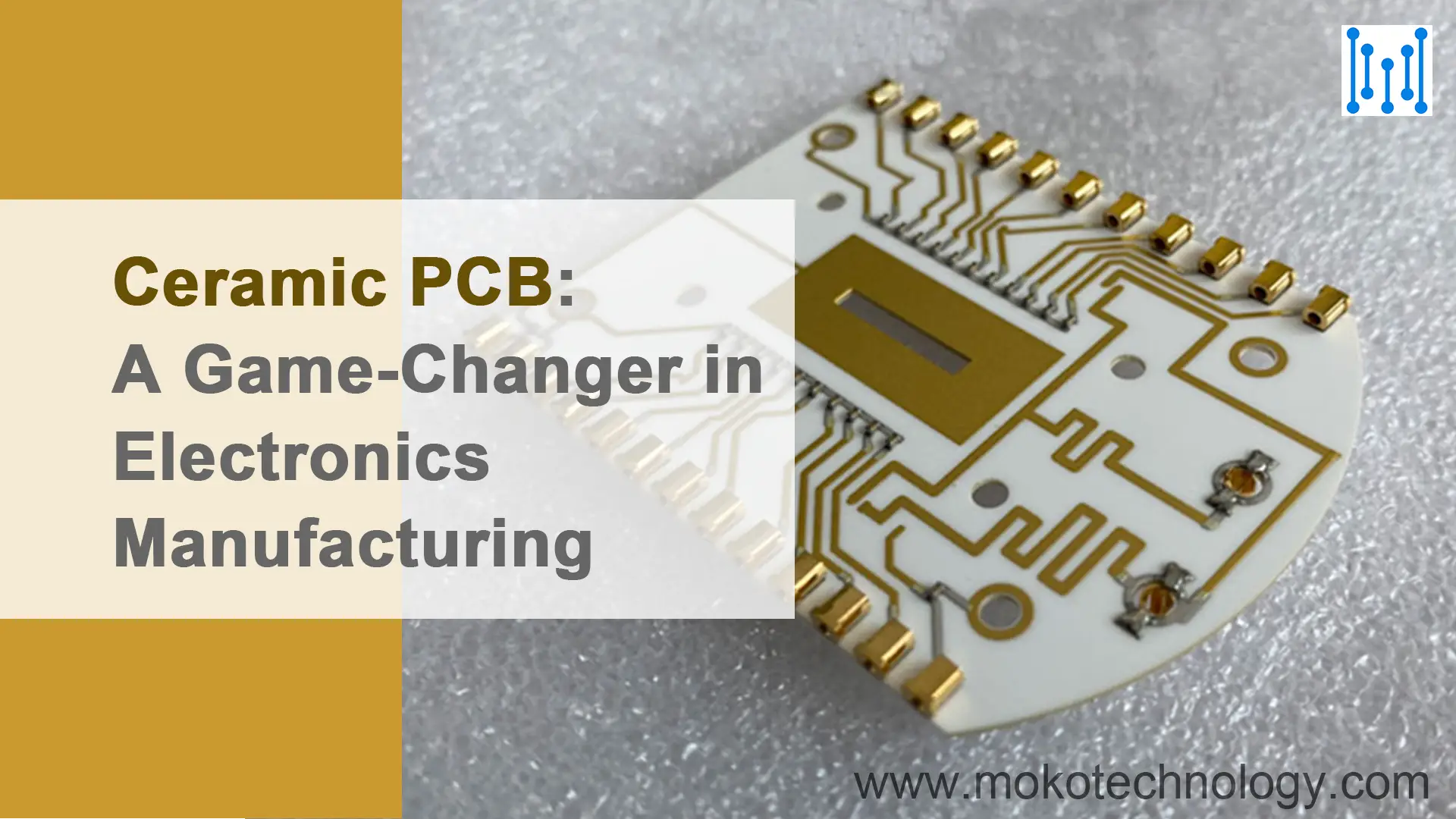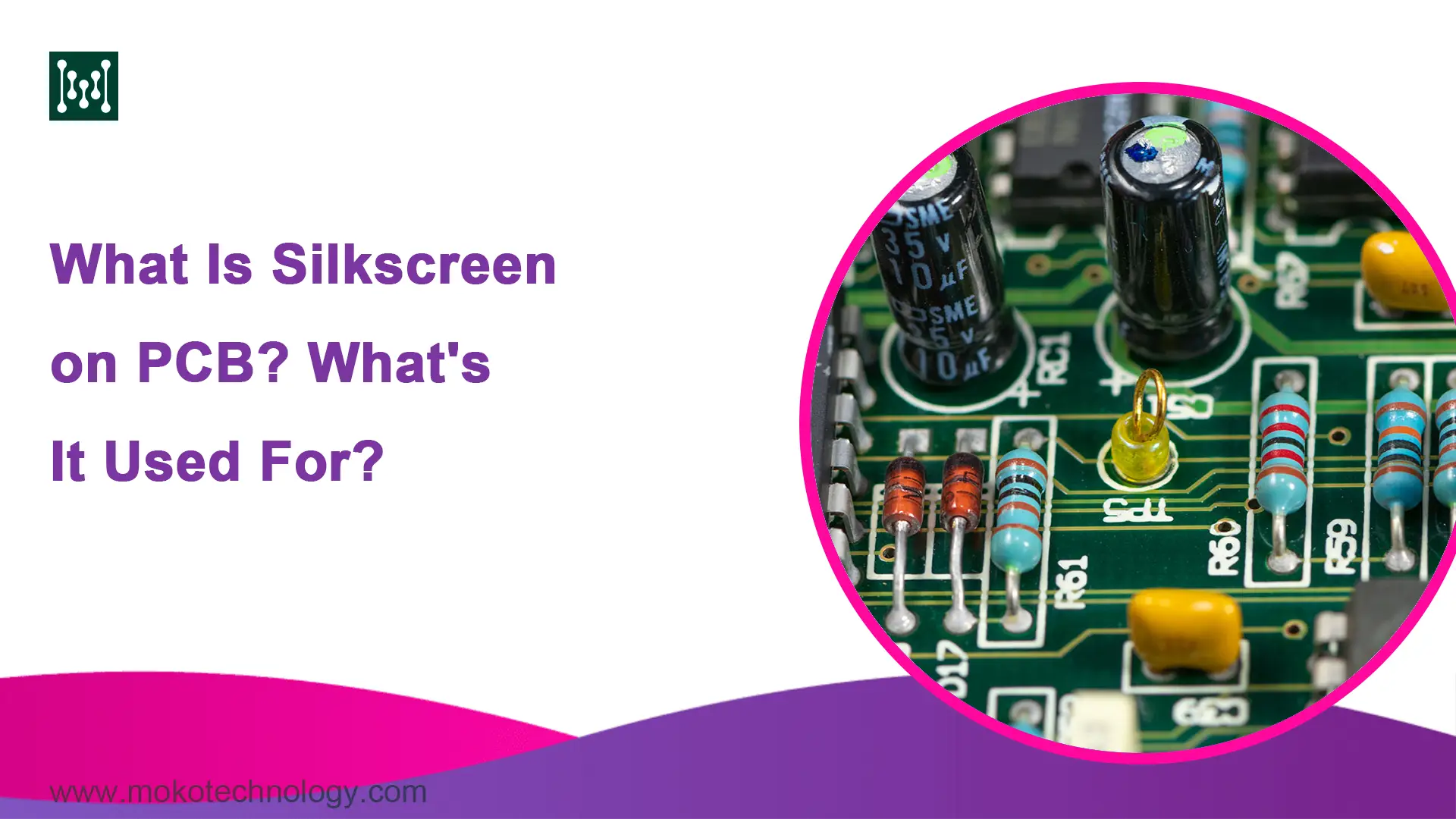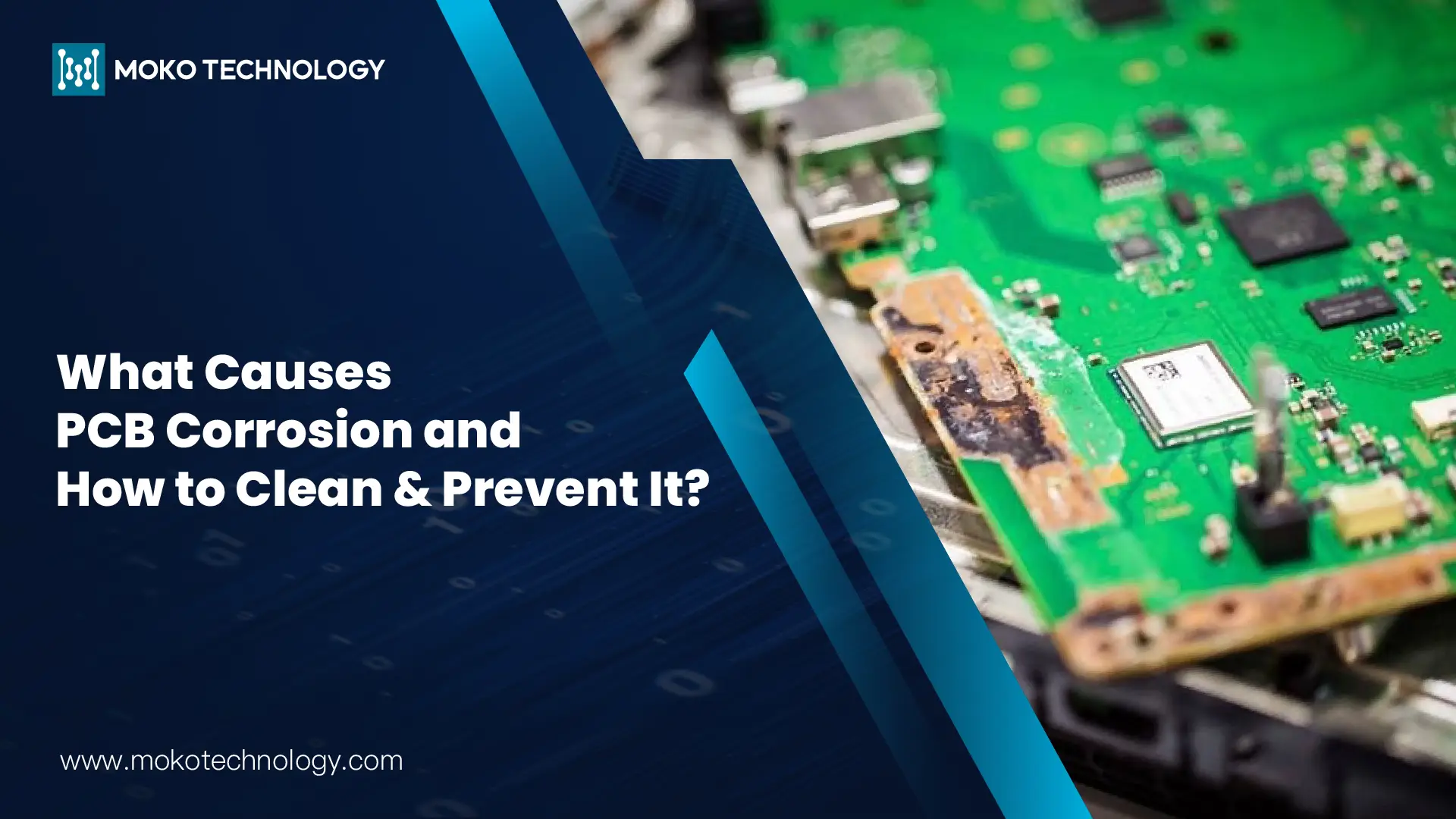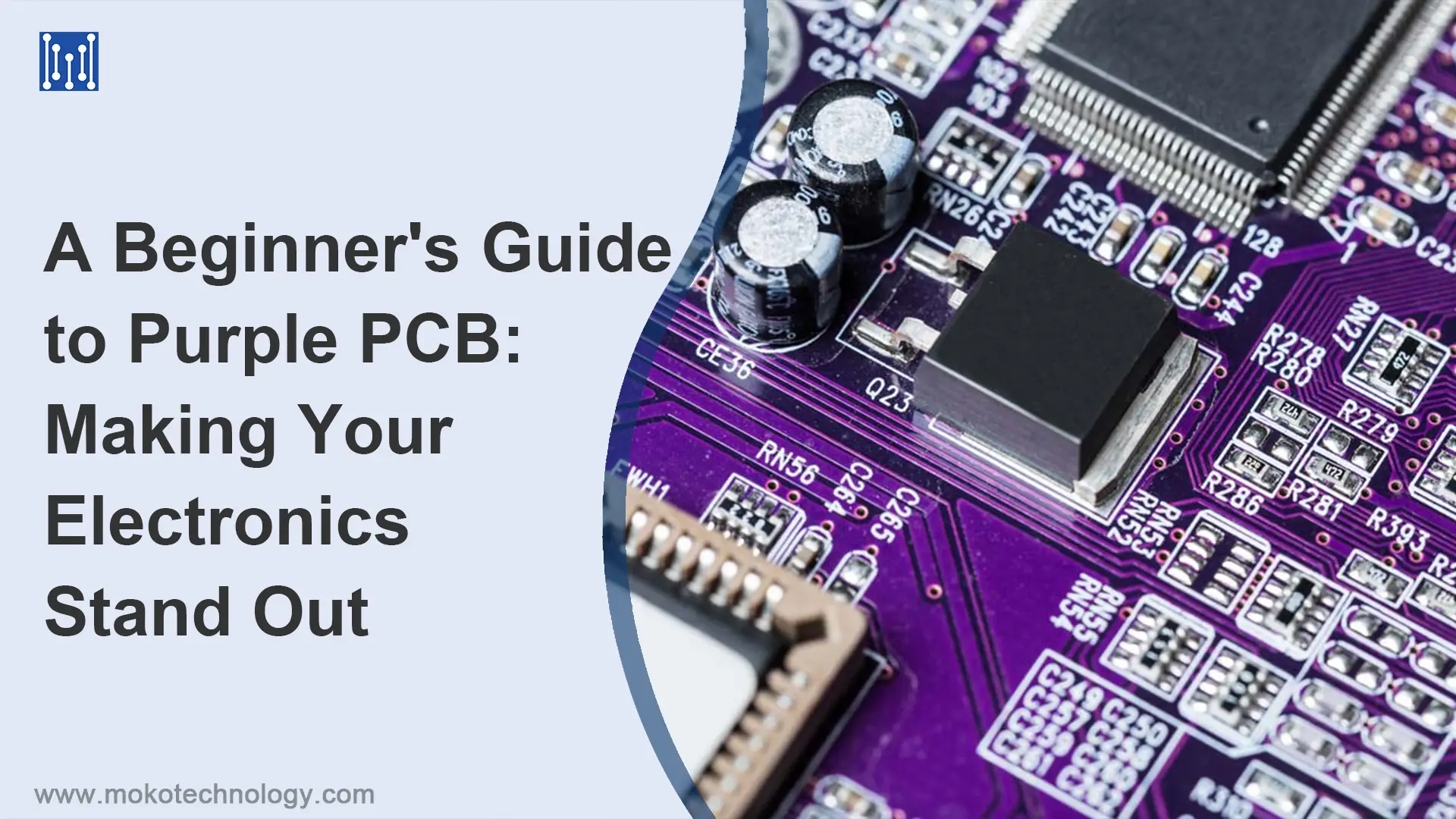In the ever-evolving landscape of electronics manufacturing, innovation continues to push the boundaries of what is possible. An innovative advancement that has gained significant momentum in recent years is the emergence of ceramic PCB. It is a relatively new type of PCB that has gained widespread acceptance in the electronics industry as an effective alternative. With their unparalleled thermal conductivity, mechanical strength, and electrical insulation properties, ceramic PCBs are redefining the possibilities for high-performance and reliable electronic systems. In this comprehensive article, we will delve into the world of ceramic PCBs, examining their distinct characteristics, different types, applications, and so on.
What Is Ceramic PCB?
Ceramic PCB, also referred to as a ceramic printed circuit board, deviates from the conventional use of fiberglass or epoxy resin by employing a ceramic material as its base or substrate. This specialized PCB features a thin insulating layer composed of ceramic material, integrated with metal components to establish the circuitry. The ceramic base material employed in ceramic PCBs, such as alumina, aluminum nitride, or beryllium oxide, exhibits remarkable heat conduction capabilities.
With its exceptional thermal capabilities and enhanced performance, ceramic PCB emerges as a compelling alternative to traditional PCBs, which can be found in different applications such as memory modules, solar panel arrays, LEDs, telecom devices, multi-layer interconnect boards, etc.
The Types of Ceramic PCBs
According to the PCB manufacturing process, ceramic PCBs are categorized into different types, including:
High-temperature ceramic PCB
High-temperature ceramic PCBs are a widely sought-after type of ceramic circuit board due to their ability to withstand and operate in high-temperature environments. These specialized PCBs are commonly known as high-temperature co-fired ceramic (HTCC) circuits. HTCC PCBs are composed of raw ceramics mixed with solvents, adhesives, plasticizers, lubricants, and aluminum oxide.
The HTCC technology enables these ceramic PCBs to maintain their structural integrity and electrical performance under extreme heat conditions. They are widely utilized in applications where high temperatures are prevalent, such as in the aerospace, automotive, and power electronics industries. The HTCC manufacturing process ensures the reliability and durability required to withstand harsh thermal environments, making high-temperature ceramic PCBs an ideal choice for demanding applications.
Low-temperature ceramic PCB
Low-temperature co-fired ceramic (LTCC) PCBs offer unique advantages compared to other types of ceramic PCBs. Unlike high-temperature co-fired ceramic (HTCC), LTCC PCBs are manufactured by combining crystal glass with an adhesive substrate on sheet metal using gold paste. The resulting circuit board is then cut, laminated, and placed in a gaseous oven at approximately 900 degrees Celsius.
One notable advantage of LTCC PCBs is their reduced warpage and improved shrink tolerance when compared to HTCC and other ceramic circuit board types. This translates to enhanced mechanical strength and thermal conductivity. Therefore, LTCC PCBs are particularly advantageous for applications involving heat dissipation products, as they offer superior thermal benefits.
Thick film ceramic PCB
Thick film ceramic PCBs are characterized by their conductor layer, which can have a thickness exceeding 10 microns but not exceeding 13 microns. Typically, on the ceramic PCB, the surface is adorned with a conductor layer that is meticulously imprinted using precious metals like silver or gold palladium. This involves the application of gold and dielectric pastes onto a ceramic base material, followed by a baking process at a temperature below 1000 degrees Celsius. The utilization of thick film ceramic PCBs is widespread among PCB manufacturers due to the relatively lower cost of gold conductor paste.
One of the primary advantages of thick film ceramic PCBs over traditional PCBs lies in their ability to protect copper from oxidation. This characteristic allows ceramic PCB manufacturers to incorporate interchangeable conductors, semiconductors, capacitors, and resistors on the ceramic board.
Advantages and Disadvantages of Ceramic PCB
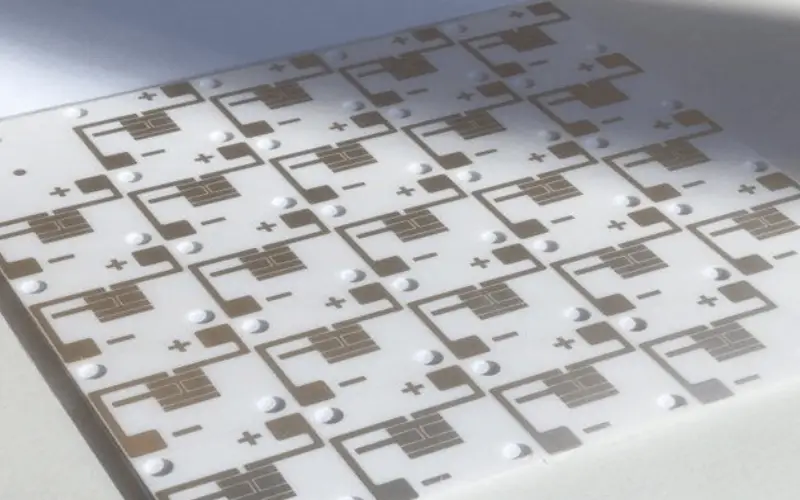
Advantages of Ceramic PCB
- Superior Thermal Conductivity
Ceramic PCBs exhibit exceptional thermal conductivity, allowing them to efficiently dissipate heat produced by electronic components. This advantage is crucial in applications where thermal management is critical, as it helps prevent overheating and ensures optimal performance and reliability.
- Low Coefficient of Thermal Expansion (CTE)
With its solid and exceptional interatomic bonds, ceramic exhibits remarkable thermal stability, enabling it to withstand high temperatures while maintaining its structural integrity. Even in the face of fluctuating temperature conditions, ceramic remains firm, stable, and steady.
- Excellent Thermal Insulation
Ceramic PCBs provide excellent thermal insulation, effectively preventing the flow of heat through the substrate. This insulation property safeguards the components on the circuit board, reducing the risk of damage or harm caused by excessive heat.
- Inorganic
One of the notable advantages of ceramic PCBs is their composition of inorganic materials, which contributes to their longevity and extended usability. Unlike organic materials, ceramics have a higher resistance to deterioration and can withstand prolonged use without compromising performance.
- High Frequency
These specialized boards enable reliable and efficient handling of high-frequency signals, ensuring superior performance and signal integrity in demanding applications. It is widely used in the medical and aerospace sectors that heavily rely on the transmission of high-frequency data and electrical signals.
- Mechanical Stability
Ceramic PCBs have high mechanical strength and rigidity, providing excellent structural stability. They can withstand mechanical stresses, vibrations, and harsh environmental conditions better than other PCB materials, reducing the risk of damage or failure.
- Design Flexibility
Ceramic PCBs enable designers to achieve smaller, more compact designs due to their dimensional stability. This flexibility is particularly valuable in applications where space is limited or miniaturization is required.
Disadvantages of Ceramic PCB
Ceramic printed circuit boards offer numerous advantages over other types of PCBs, making them a compelling choice for certain applications. However, it is essential to consider and thoroughly examine potential drawbacks associated with their use:
- Complexity in Manufacturing
Ceramic PCBs require specialized manufacturing processes, such as thick-film or thin-film deposition techniques, which can add complexity to the production process. This may increase lead times and manufacturing costs, as well as require skilled technicians or specialized facilities.
- Higher Cost
Ceramic PCBs are generally more expensive compared to traditional PCB materials like FR4. The cost is primarily attributed to the specialized ceramic materials and manufacturing processes involved.
Comparison between Ceramic and FR4
When it comes to choosing the right board material for electronic applications, FR4 has long been the go-to choice for many manufacturers. However, as technology advances and demands for higher performance escalate, ceramic boards have emerged as a compelling alternative. In this part, we compare these two types of materials in terms of different aspects. Check the chart below for details:
| Parameter/ Material Used | Ceramic | FR4 |
| Thermal Conductivity (W/m-K) | Commonly used materials: 20 to 40 /Special materials:25 to 200 | 0.25 to 0.35 |
| Thermal Expansion | Low | Medium |
| Frequency Performance | High | Low – Mid |
| Moisture Absorption | Negligible | Relatively high |
| Operating Temperature | Up to 500°C (varies) | Up to 130°C (varies) |
| RF Performance | Excellent | Limited |
| Mechanical Strength | High | Moderate |
| Manufacturing Process | More complex, specialized | Less complex |
| Cost | Higher than FR4 | Relatively low |
Choose MOKO Technology to Manufacture Ceramic PCBs
When it comes to manufacturing ceramic PCBs, selecting the right PCB manufacturer is of utmost importance. A reliable and experienced manufacturer can ensure the highest quality, precision, and performance of ceramic PCBs. With years of expertise and a commitment to excellence, MOKO Technology has become a go-to solution for ceramic PCB manufacturing. We utilize cutting-edge facilities and manufacturing processes and perform stringent quality control measures to guarantee the production of top-notch ceramic PCBs. We understand the unique requirements of ceramic circuit boards and deliver customized solutions that meet the highest industry standards. Contact us today to kick off your project!
